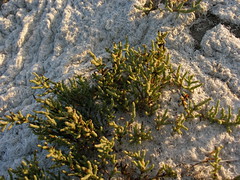Ocean Frontiers is a movie you cannot miss the opportunity to watch. If not because you are genuinely interested in a film that outlines the transition of thought from the “the outlook is grim for the future of the ocean” to “there is a light at the end of the tunnel for our ocean“, then watch it because it’s always a pleasure to view any work of art that is clearly a labor of love as this obviously was for producers Ralf and Karen Meyer.
The movie takes you across the country (Washington State, New England, the Gulf of Mexico) and shares stories of the movement of scientists, farmers, fishermen, government agencies, and businesses as they come together for long-term solutions with the understanding that there is prosperity through preservation. Now that “jellyfish are often the catch of the day”, “many of the largest fish have been caught”, and “most of the world’s coral reefs are bleached and dying” there is recognition that the “sea is not boundless”.
Below is a clip from the movie illustrating how the Florida Keys were transformed and revitalized through this attitude of cooperation and that the mentality that the long-term outlook is best for all. How I loved watched this part as it reminded me of my days in Florida for graduate school!










What people are saying …